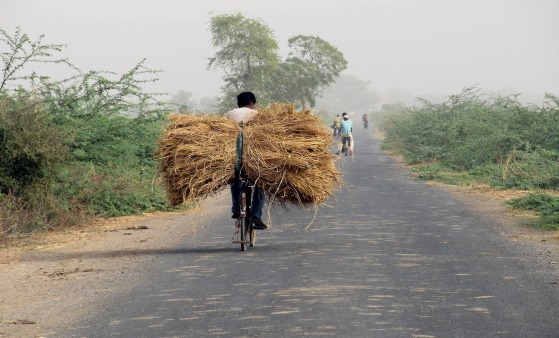Guwahati – This monsoon, northeast India have been struck by the worst floods in 25 years that have killed over 200 and have left millions displaced. However, help is at hand as the Church has swung to the rescue by taking part in relief operations and working closely with the local governments to rehabilitate the displaced.
Since late June, the floods have affected the states of Assam and Arunachal Pradesh the most. The floods have already destroyed over 800,000 hectares of farmland, washing away nearly 55,000 houses and killing hundreds of livestock.
Across South Asia, this year's monsoon rains reportedly have left more than 400 people dead and more than 8 million homeless or stranded. Some reports claim that up to 20 million people have been affected in the region.
Monsoon generally begins late June in northeast India. This year, heavy monsoon shower leading to floods have put the official figures of those dead at 92 in Assam and 13 in Arunachal Pradesh, the two most affected states. The total number of dead stands at around 200.
In addition to the dead and the missing, many people and villages have become isolated and unreachable. Many have sought refuge on higher elevations waiting for rescue by army and paramilitary units.
S. Samuel, regional assistant of Caritas, the international Catholic social service agency, announced that his organization was allocating around Rs. 11 lacs to relief work in the dioceses of Bongaigaon, Dibrugarh, Tezpur, and Guwahati.
World Vision, another Christian humanitarian organization, said its workers had already distributed relief materials to flood victims worth Rs. 5 lacs. The organization was however still looking for further assistance.
In addition to aid and assistance provided by organized groups individuals have also acted on their own. In Guwahati diocese for example volunteers are providing rice, cereals, salt, medicine, and tarpaulin to about 6,000 families.
According to Father Joseph Olickal, director of the archdiocesan social services in Guwahati, “the floods have washed away entire fields of standing crops and many villages are still out of reach. The flooding has been worsening year by year.”
Father Ambrose Toppo, of Dibrugarh diocese, warns that in addition to food people need medicines to fight the various water–born infections and diseases that are already breaking out among flood victims.
In Tezpur diocese, where food and medicines have already been distributed, Father Philip Barla calls for more relief funds “so that we can be more effective in helping the affected.”
Not all local organisations mobilised immediately; some chose to wait. For instance, the Catholic Relief Service (CRS), the international social service arm of the Catholic Bishops' Conference of the United States, announced its intention of intervening in three weeks time when government relief activities are expected to slow down.
The rains have caused many rivers to change course, flooding inhabited areas. Bridges have been washed away, cutting communication lines. Soil erosion and landslides triggered by the heavy rains have worsened matters.
“These are the worse floods in years for this season,” said Mr. Tarun Gogoi, the Chief Minister of Assam, the worst affected area. “Thousands of people are still suffering and only God can save us.”
In the mountains of neighboring Arunachal Pradesh state, landslides and heavy rains have made the situation worse by washing away bridges and blocking roads. Rescue operations have been made nearly impossible. Many dams have collapsed flooding nearby valleys. Because of heavy monsoon rains the Brahmaputra River broke its banks and rose 80 cm above the alarm level in Kaziranga National Park and more than 150 cm around Majuli Island, the largest fluvial island in the world, which is now completely cut off. Many villages are flooded and the main roads and rail lines are impassable virtually isolating the entire state from the rest of the country.
The Indian army has set up camps in various parts of the affected region to provide shelter for the homeless population. Military helicopters have also rescued people in villages and cities, in one case saving 350 children stranded on the rooftop of a school that had been flooded when a river broke an embankment.




